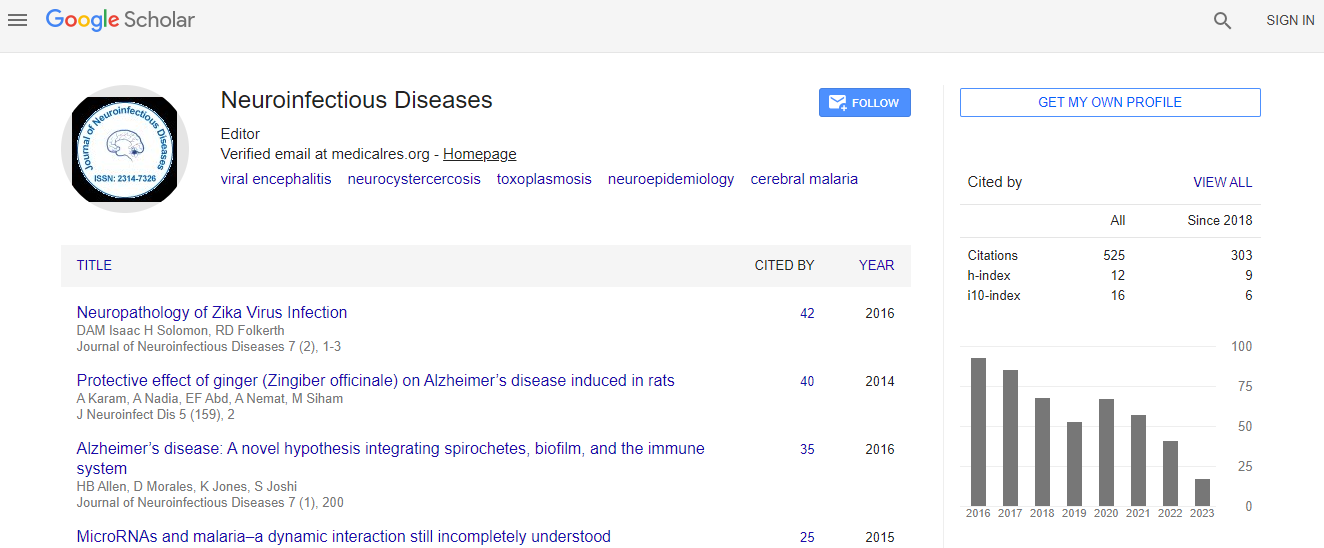Review Article
Envelope Gene Evolution and HIV-1 Neuropathogenesis
| Fabián Vázquez-Santiago and Vanessa Rivera-Amill* | |
| Department of Basic Sciences, Ponce Health Sciences University-School of Medicine/Ponce Research Institute, Ponce, PR 00716, USA | |
| Corresponding Author : | Vanessa Rivera-Amill PhD, Department of Basic Sciences Ponce Health Sciences University-School of Medicine/Ponce Research Institute Research Building, 395 Zona Industrial Reparada 2 Ponce, PR 00716-2347, USA Tel: (787) 840-2575 E-mail: vrivera@psm.edu |
| Received: July 18, 2015; Accepted: August 19, 2015 Published: August 22, 2015 | |
| Citation:Santiago FV, Amill VR (2015) Envelope Gene Evolution and HIV-1 Neuropathogenesis. J Neuroinfect Dis S2:003. doi:10.4172/2314-7326.S2-003 | |
| Copyright: © 2015 Vázquez-Santiag F, et al. This is an open-access article distributed under the terms of the Creative Commons Attribution License, which permits unrestricted use, distribution, and reproduction in any medium, provided the original author and source are credited | |
| Related article at Pubmed, Scholar Google | |
Abstract
In the era of combined antiretroviral therapy (cART), HIV-associated neurocognitive disorders (HAND) account for 40 to 56% of all HIV+ cases. During the acute stage of HIV-1 infection (<6 months), the virus invades and replicates within the central nervous system (CNS). Compared to peripheral tissues, the local CNS cell population expresses distinct levels of chemokine receptors, which levels exert selective pressure on the invading virus. HIV-1 envelope (env) sequences recovered from the brains and cerebrospinal fluid (CSF) of neurocognitively impaired HIV+ subjects often display higher nucleotide variability as compared to non-impaired HIV+ subjects. Specifically, env evolution provides HIV-1 with the strategies to evade host immune response, to reduce chemokine receptor dependence, to increase co-receptor binding efficiency, and to potentiate neurotoxicity. The evolution of env within the CNS leads to changes that may result in the emergence of novel isolates with neurotoxic and neurovirulent features. However, whether specific factors of HIV-1 evolution lead to the emergence of neurovirulent and neurotropic isolates remains ill-defined. HIV-1 env evolution is an ongoing phenomenon that occurs independently of neurological and neurocognitive disease severity; thus HIV env evolution may play a pivotal and reciprocal role in the etiology of HAND. Despite the use of cART, the reactivation of latent viral reservoirs represents a clinical challenge because of the replenishment of the viral pool that may subsequently lead to persistent infection. Therefore, gaining a more complete understanding of how HIV-1 env evolves over the course of the disease should be considered for the development of future therapies aimed at controlling CNS burden, diminishing persistent viremia, and eradicating viral reservoirs. Here we review the current literature on the role of HIV-1 env evolution in the setting of HAND disease progression and on the impact of cART on the dynamics of viral evolution.

 Spanish
Spanish  Chinese
Chinese  Russian
Russian  German
German  French
French  Japanese
Japanese  Portuguese
Portuguese  Hindi
Hindi 
